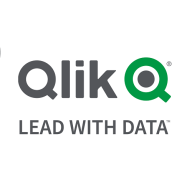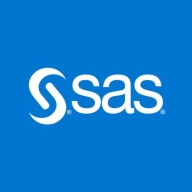

SAS Data Management and Qlik Compose compete in the data management and data integration category. SAS Data Management seems to have the upper hand with its robust data management capabilities across diverse environments, although Qlik Compose shines in simplifying data warehouse automation.
Features: SAS Data Management offers capabilities like ETL, CDC, and MDM, delivering comprehensive data integration and analysis, praised for its flexibility and powerful analytics abilities. Qlik Compose is known for its simplicity in data warehouse automation, real-time replication, and excellent auto-mapping, making data modeling and code generation easy.
Room for Improvement: SAS Data Management could benefit from more competitive pricing and licensing, enhanced cloud integration with better connectivity options, and improved documentation. Qlik Compose faces challenges with complex SQL processing, needs better monitoring and ETL capabilities, and calls for improved support for high-volume data processing.
Ease of Deployment and Customer Service: SAS Data Management is mostly deployed on-premises, with strong post-acquisition customer service, but technical support experiences vary. Qlik Compose offers flexible deployment options on-premises and cloud, receiving feedback for decent but improvable customer support.
Pricing and ROI: SAS Data Management is considered expensive but valued for its comprehensive capabilities that offer high ROI for large enterprises. Qlik Compose offers a pricing model based on data volume with mixed feedback, showing potential ROI by optimizing data accuracy and efficiency, but its competitiveness for broader adoption could improve.
| Product | Market Share (%) |
|---|---|
| SAS Data Management | 0.9% |
| Qlik Compose | 1.0% |
| Other | 98.1% |


| Company Size | Count |
|---|---|
| Small Business | 3 |
| Midsize Enterprise | 3 |
| Large Enterprise | 6 |
| Company Size | Count |
|---|---|
| Small Business | 7 |
| Midsize Enterprise | 1 |
| Large Enterprise | 8 |
Qlik Sense is a powerful business intelligence tool that offers a range of features to help organizations make faster and more informed decisions. Its primary use cases include operational and financial dashboards, self-service reporting, and centralized access to cross-functional reports. The solution is praised for its mobile platform, ease of use, data-sharing capabilities, and extensibility.
Qlik Sense has helped organizations improve data literacy, reduce time consumed in complex reports, and provide widely available MI to senior stakeholders. It also enables self-service analytics, improves data quality and governance, enhances collaboration, and reduces costs.
Every decision, every business move, every successful customer interaction - they all come down to high-quality, well-integrated data. If you don't have it, you don't win. SAS Data Management is an industry-leading solution built on a data quality platform that helps you improve, integrate and govern your data.
We monitor all Data Integration reviews to prevent fraudulent reviews and keep review quality high. We do not post reviews by company employees or direct competitors. We validate each review for authenticity via cross-reference with LinkedIn, and personal follow-up with the reviewer when necessary.